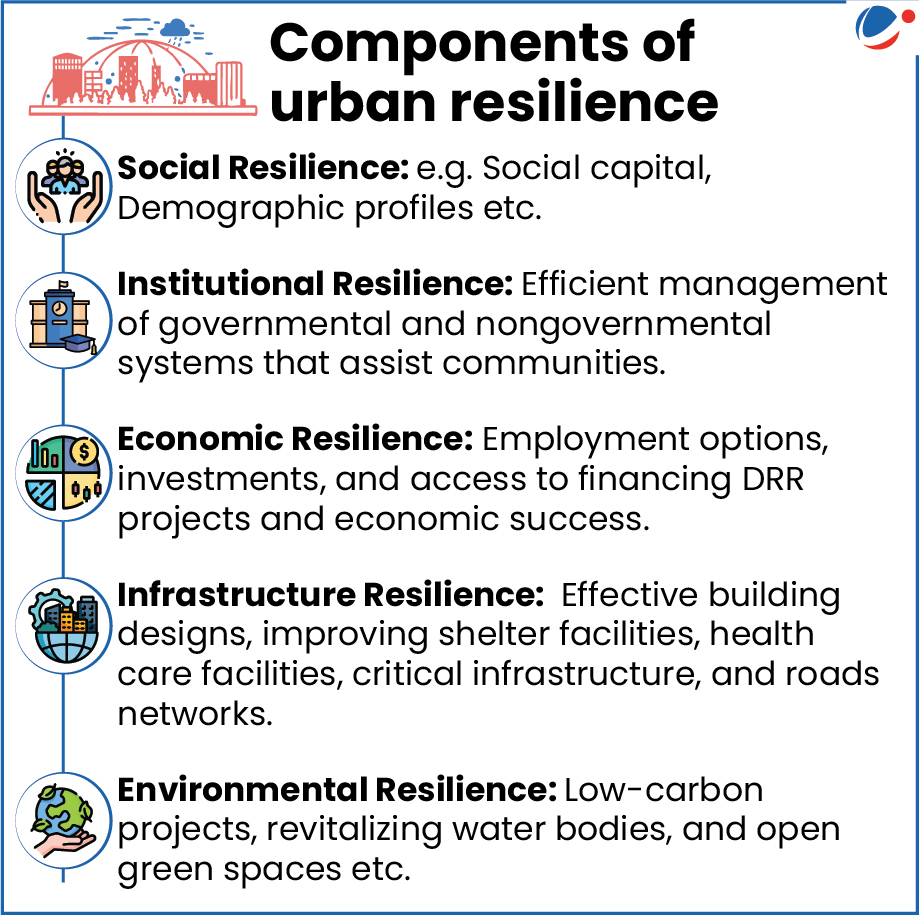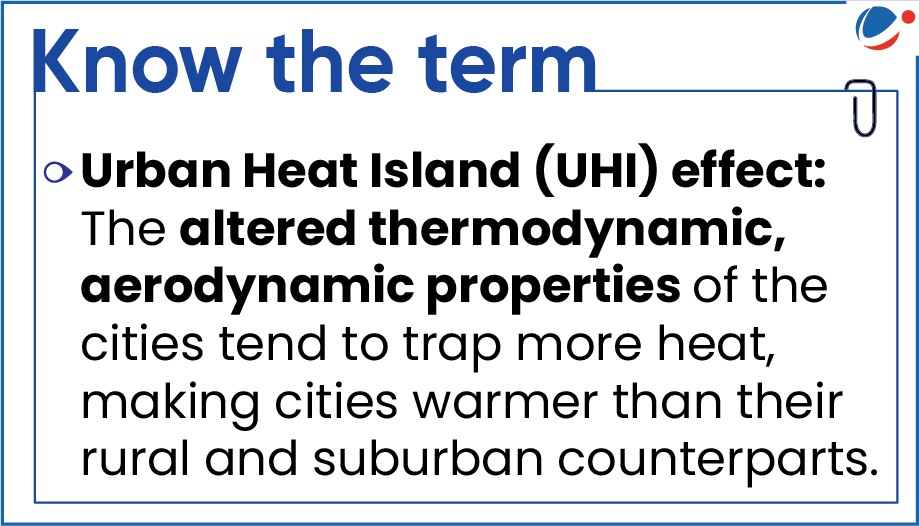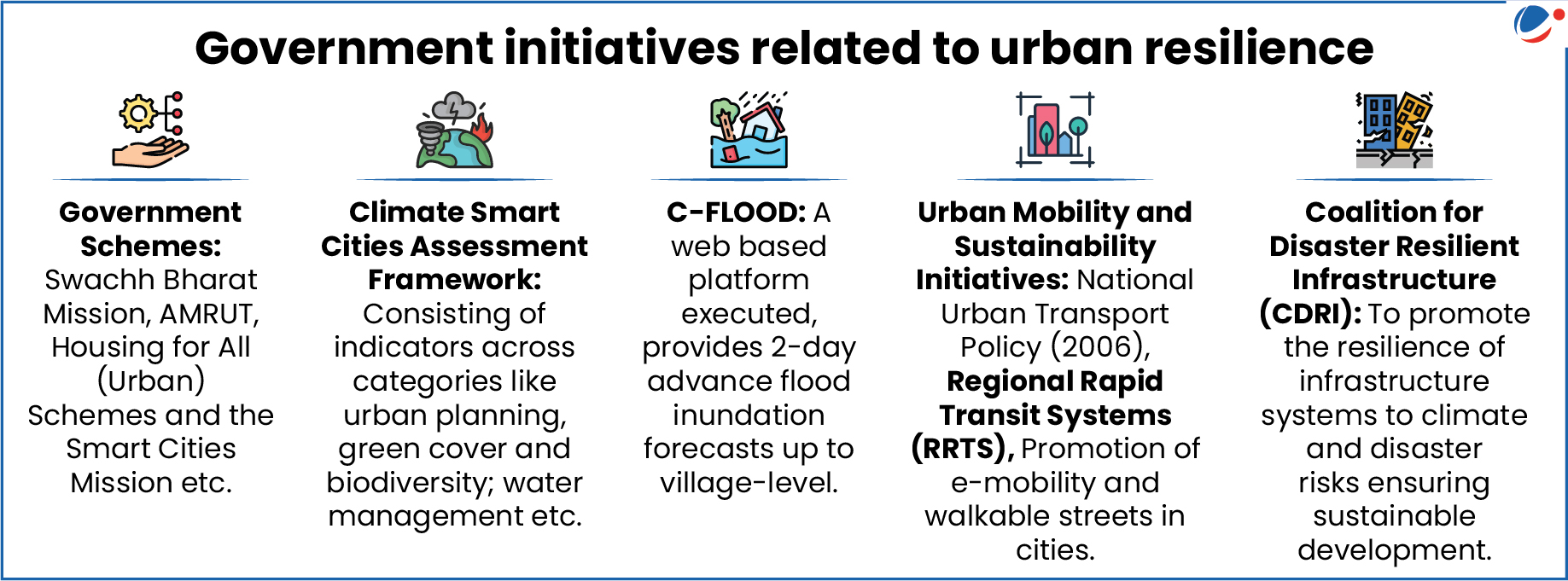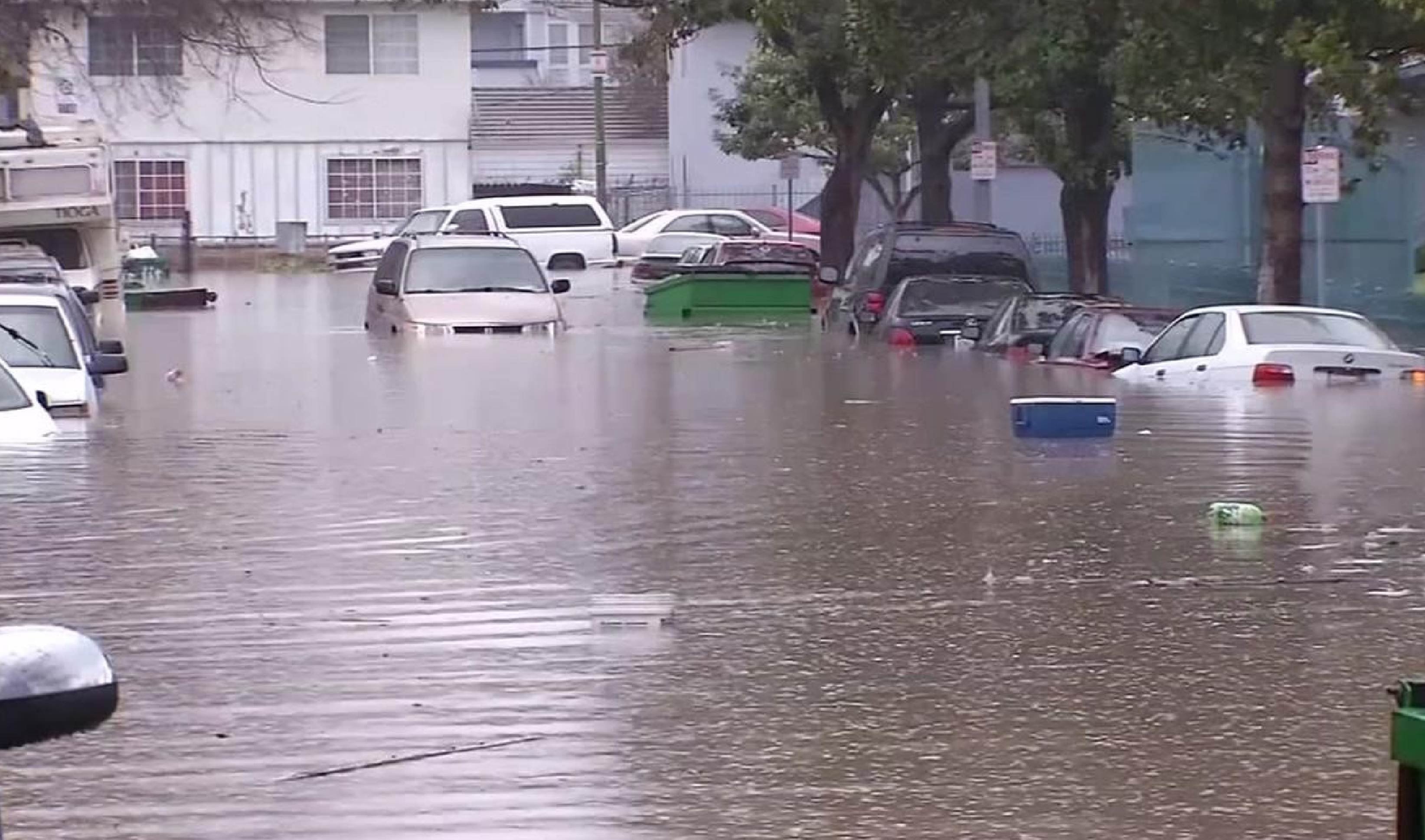Why in the News?
Recent World Bank report titled "Towards Resilient and Prosperous cities in India" highlights the significant challenges faced by Indian cities due to rapid urbanization and climate change.

More on the News:
- India is undergoing rapid urbanization, with its urban population projected to nearly double from 480 million in 2020 to 951 million by 2050, and further increase to 1.1 billion by 2070.
- This massive demographic shift means that over 70% of new jobs in India are expected to be generated in cities by 2030.
What is urban resilience?
- It refers to ability of an urban system to maintain or rapidly return to desired functions in the face of a disaster, to adapt to change, and to quickly transform systems that limit future adaptive capacity.
Key Observations of Report regarding Vulnerable Indian Cities:
- Urban Flooding: Pluvial (storm water) flooding risk is rapidly increasing, with a forecasted rise of 3.6 to 7 times by 2070.
- Annual losses from pluvial flooding are estimated at $4 billion currently, projected to increase to $5 billion by 2030.
- Coastal Flooding: 40% of Indian population lives within 100 kilometers of the coast.
- Annual costs of coastal flood damage in urban areas are projected to increase dramatically from $2.4 billion in 2010 to $21 billion by 2030 and $75 billion by 2050.

- Rising Urban Heat Island (UHI) effect exacerbates heat stress, with nighttime temperatures in major Indian cities exceeding surrounding rural areas by 3°C to 4°C.
- Economic output loss due to labor productivity effects is significant; for example, Chennai could lose 3.2% of its GDP by 2050.
- Cascading Infrastructure Failure: Cities are highly interconnected systems. E.g. flooding can lead to road closures, electricity outages, and economic losses, paralyzing urban areas.
- Concretization of Urban spaces: It leads to urban flooding, Urban Heat Island effect etc. further exacerbating climate extremities and increasing risk factors.
Challenges in building urban disaster resilience:
- Fragmented Governance: Responsibilities for urban development, disaster risk management, and climate action are fragmented across multiple departments and levels of government, hindering coordinated action.
- Lack of Master Plans and Technical Capacity: Over half (52%) of Indian towns and cities lack an approved master plan, and there's a shortage of urban planners in Urban Local Bodies (ULBs).
- Limited Municipal Finance: Cities' own-source revenue is low ( approx. 1% of GDP) and often insufficient to cover operational costs.
- Crumbling Infrastructure: E.g., inadequate sewerage and drainage systems to cope with heavy rainfall.
- Limited Private Sector Role: Private sector contributes only 5% of urban infrastructure financing despite having project planning and efficiency capabilities.
- Other issues: Insufficient health infrastructure; Departments focusing on water, transport, energy, etc. operating in silos; Stagnant Private funding etc.

Recommendations by Report
- Flood and Extreme Heat Resilience Program: Comprehensive city-level climate-action plans for sustainable urban development.
- Extending provisions of 74th Constitutional Amendment Act 1992: Transfer of urban planning function from States/UTs to elected urban local governments to develop a Funding and Financing Strategy.
- Improve cost recovery and financial sustainability of municipal services: Improve municipal revenue and cost recovery from water, urban roads, sanitation, and solid waste management.
- Indian cities will require a substantial investment of $2.4 trillion by 2050 to build climate-resilient infrastructure and services.
- Re-engineering of urban governance: Clear division of roles and responsibilities among various authorities and extensive adoption of technology for service delivery, etc.
- Fulfilling Global Commitments: E.g. SDG Goal 11 (making cities inclusive, safe, resilient, and sustainable), new urban agenda adopted at Habitat III in 2016 etc.
- Inclusive Development: Development of smaller cities like Tier 2 and Tier 3 cities, creation of satellite towns, focus on circular economy and adopting a combination of mixed and Transit Oriented Development (TOD) etc.
Conclusion
"Let's consider urbanization as an opportunity. Gone are the days when it was seen as a challenge or obstacle, Cities are not only growth centers. Our cities have strength & capacity to mitigate poverty." – PM. Modi.






